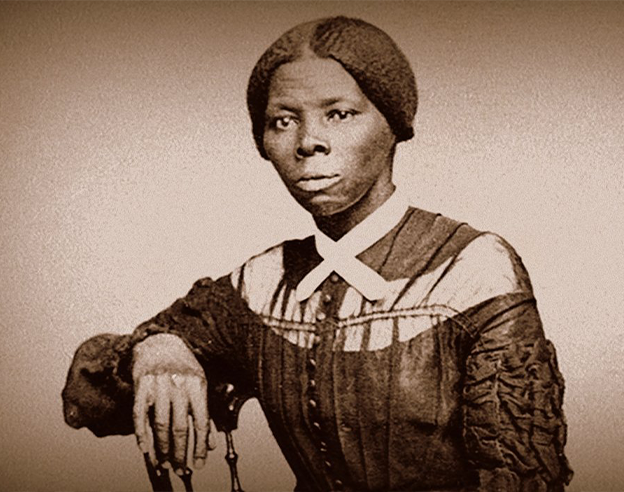The most famous conductor on the Underground Railroad
and the secret network’s most celebrated figure, Harriet Tubman was an enslaved woman who found her freedom and led others to theirs, a dynamic leader in the Union Army during the Civil War and a loving caretaker for the elderly and poor. Share with your students the details of Harriet’s life and achievements included in the timeline and audio files below and discuss how her spirit and legacy are reflected in Nina Cooke John’s monument.

TIMELINE
About Harriet Tubman
Araminta Ross (later known as Harriet Tubman) is born in Dorchester County, Maryland.
Araminta demonstrates early signs of resistance to slavery when she intervenes to prevent her enslaver from beating an enslaved Black man who attempted to run away.
Hear more about this episode in Harriet’s life.
Although enslaved people are not legally permitted to marry, Araminta entered a marital union with John Tubman, a free Black man. She took her mother’s name, Harriet, and husband’s last name, Tubman.
Harriet Tubman and two of her brothers escaped slavery to the North. Harriet settled in Pennsylvania; John Tubman refused to join her.
Hear more about Harriet’s escape to freedom.
Harriet lived and worked several summers in Cape May, New Jersey, to help fund her rescue missions to the South.
Hear more about Harriet’s escape to freedom.
She returned to the South several times to help other enslaved people escape; she never lost a “passenger” on the Underground Railroad.
Hear more about Abolitionist Frederick Douglass’ admiration of Harriet and her accomplishments.
Harriet purchases a piece of land in Auburn, New York, where she builds a home for the aged and where she would spend the rest of her life.
Harriet Tubman embarks on her last mission on the Underground Railroad.
Hear more about Harriet’s “go forward or die” attitude during her rescue missions.
Harriet Tubman served as a spy, nurse, scout, and cook in the United States Army; she helped to rescue over 700 enslaved people during the Combahee River raid in South Carolina.
Hear more about Tubman’s role in the Civil War.
Harriet Tubman married Nelson Davis, a Civil War veteran; they adopt a girl named Gertie.
Harriet Tubman becomes more involved in the women suffragist movement.
Hear more about Harriet’s work as civil rights leader.
Harriet Tubman died on March 10, in Auburn, New York; she is buried with military honors at Fort Hill Cemetery.
President George H.W. Bush proclaims March 10 Tubman Proclamation Day in honor of Tubman’s extraordinary courage and commitment to freedom.
The City of Newark announces decision to rename Washington Park in honor of Harriet Tubman for her “heroic efforts leading enslaved Africans to freedom via the Underground Railroad.”
Timeline courtesy of historians James Amemasor, Noelle Lorraine Williams and Linda Caldwell Epps.
Excerpts were taken from Monumental: Harriet Tubman and Newark’s Liberation Movement, an Audible Original produced in 2023 and narrated by Newark-native Queen Latifah.